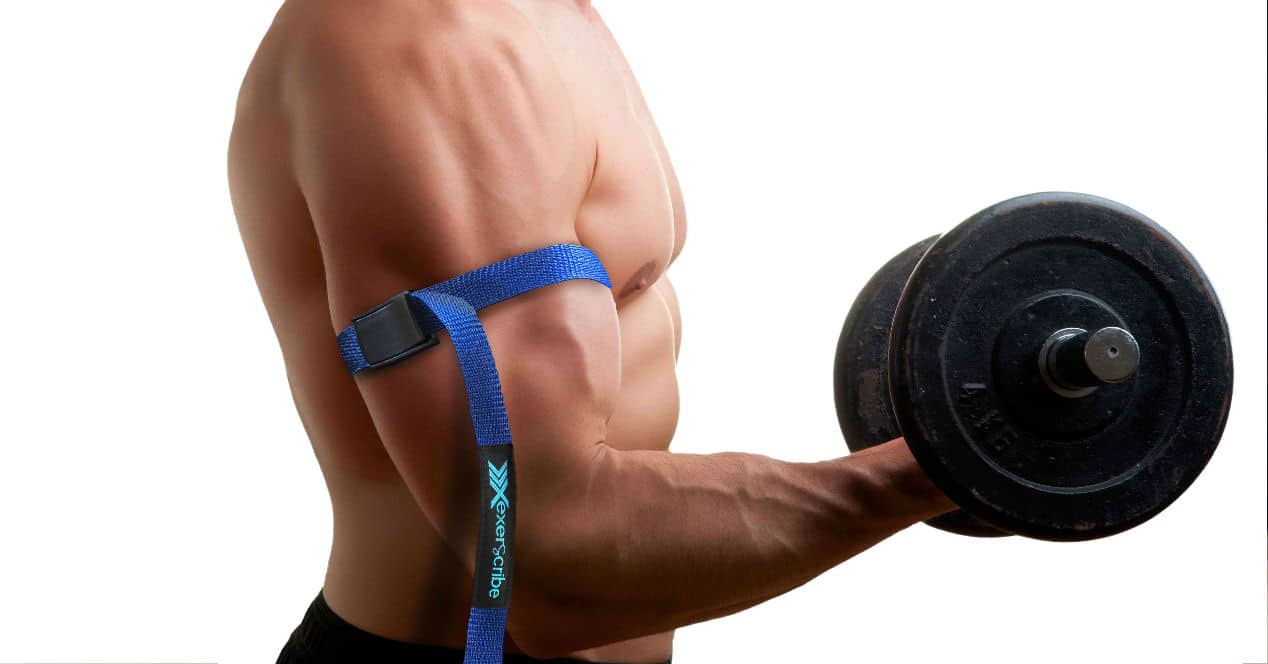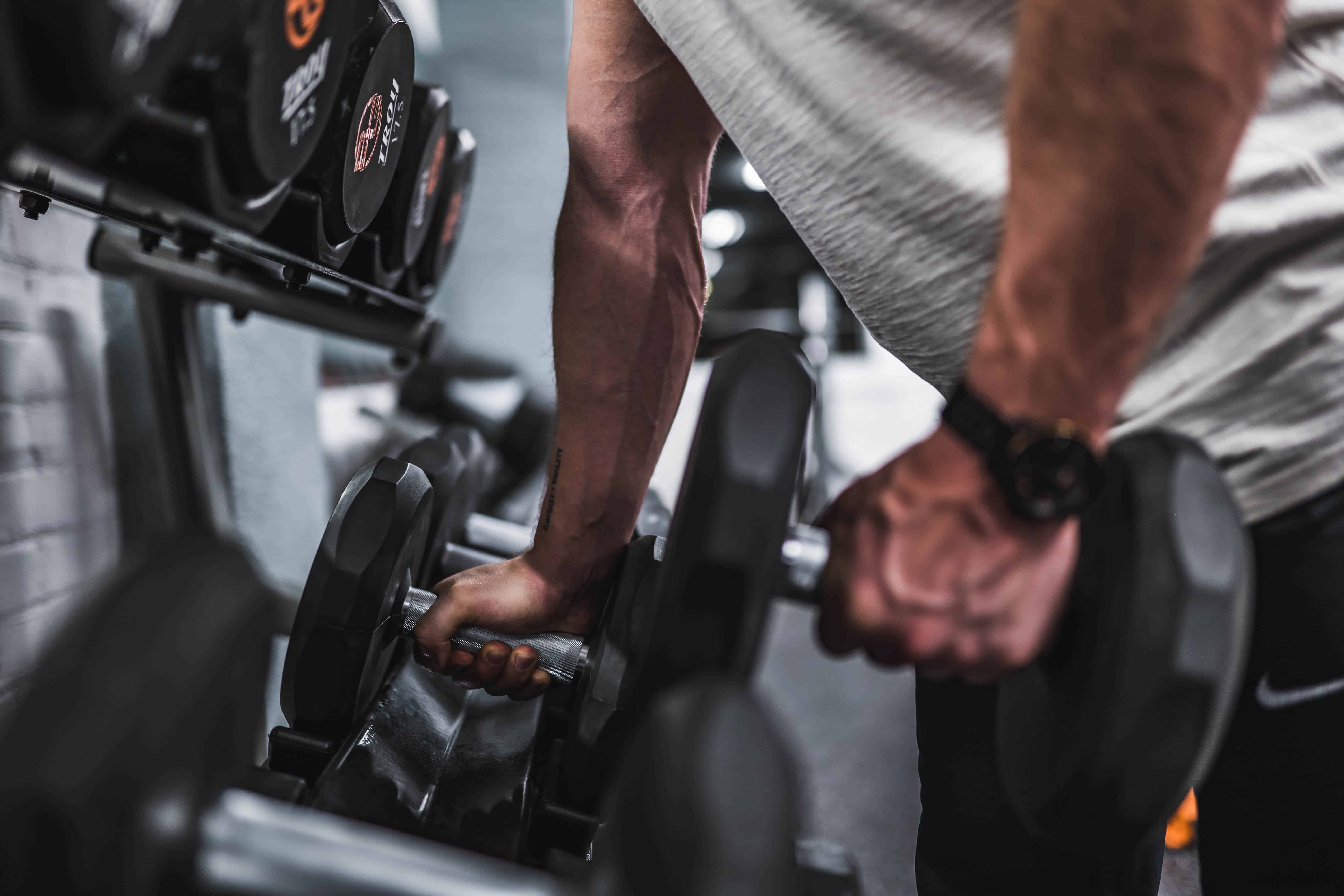
Occlusive training is usually a recurring theme among those who have been strength training for a while. According to what they say, you can increase your muscle mass faster than if you do traditional training, but is it true?
We tell you what this type of training is, its benefits and the possible risks of its practice. If you are going to start an occlusive training, at least you know what you are facing, right?
How It Works
Some you also know as Kaatsu or blood restriction training, and consists of a type of training that limits the passage of blood to the muscle that we are training. Eye! To limit the circulation is not to cut off the blood flow completely, but rather generate some pressure with a bandage to slow down the blood.
It can be dangerous if you don't control the fit of the bandage. The goal of this training is to keep the blood in the muscle for as long as possible so that it has positive effects on muscle growth.
Blood is responsible for transporting oxygen, glucose, nutrients and all the substances that allow us to live through our body. Of course, our muscles require a constant flow in order to train correctly.
As you well know, the heart pumps blood throughout the body in order to function in any activity. When we perform strength training, the muscles send blood back to the heart with a greater speed, causing swell momentarily. By resting, the swelling is reduced.
In occlusive training, one seeks prolong that swelling longer, to increase metabolic stress, without having to perform too much tension or too many repetitions.
One of the main causes of muscle hypertrophy is metabolic stress. Logically, by performing muscle tension with few breaks, it causes that stress we are talking about. By slowing down the flow of blood, the compounds in the blood stay longer in the muscles, making that exercise more intense. metabolic stress. So yes, occlusive training works.

Services
The benefits include the lower weight with which we train. As we will have some limitation to take large loads, the weight has to be reduced and we will protect the joints and tendons. In addition, the risk of lifting injury is also reduced. It is an interesting workout for those who have just come out of an injury and do not want to overload their muscles quickly, but also do not want to lose volume.
Improve physique
Anyone who wants to attract and impress, whether that means bigger biceps or glutes, can do so with this type of workout.
We may be passing through middle age looking for ways to reverse the physical decline you see on the horizon. The unique muscle-building properties that only occlusive training offers will propel us toward goals that often seem elusive. You're never too young (if you're over 16) or too old to put on a belt, get bigger and stronger faster, and get noticed.
Increase performance
The science is rock solid. The benefits of occlusive training are not limited to increasing muscle size and strength. Benefits also include a increased muscular and cardiovascular endurance. It gives us the advantage over the competition you are looking for. It doesn't matter what our sport is. Occlusion training will take us to new heights, whether it's soccer or dance, tennis or swimming, cycling or crossfit, squash or rugby.
There's a reason occlusion training has become a common practice for elite athletes. It gives them the extra stamina they need to win. Whether we're competing against other teams or just against ourselves, the endurance benefits of occlusion training are real.
Greater recovery
The physiological processes that build muscle size and strength are the same processes that repair muscles. Muscles grow when fibers are torn through exercise, repaired, and then strengthened before the next workout or competition. Improvement follows recovery. Since occlusion training stimulates this physiological process, it also speeds recovery. Elite athletes know that faster recovery from a match or other competition means being able to get back to training sooner and be ready for the next event sooner.
Regardless of the sport we do, we know that we need to rest and recover before doing it again. If we have not recovered, performance is affected.
injury rehabilitation
Rugby players, footballers and bodybuilders know that injury or surgery will set them back. They will lose size, strength, and stamina because training intensity is affected for a few weeks or even months while they heal.
We all know that the exercise prescribed by our physical therapist is largely intended to help us maintain our muscle strength as we go through the healing process.

Risks
In contrast, we have some studies that ensure that this type of training should not be abused. It can be said that the main risk is not correctly establishing the pressure exerted, so that the occlusive training will be practiced poorly.
The biggest risk factors come from a few variables: inadequate tourniquet width, too much tourniquet pressure, and incorrect tourniquet placement.
First of all, the width of the turnstile is key. The wider ones decrease the pressure needed to restrict blood flow. This means that the small cuffs sold by many manufacturers increase the risk of soft tissue damage. A wider tourniquet should be used to minimize this.
The next risk factor is excess pressure, which has already been partially covered. The limb occlusion pressure should be the minimum amount of pressure needed by a specific patient, in a specific limb, on a specific day, to occlude the proper amount of blood flow.
Finally, the tape placement it's incredibly important. There are only two places where a device should be placed. That's the upper arm and upper thigh. This will minimize the risk of nerve damage. Tourniquet placement in other areas is known to cause nerve damage problems, including nerve palsies such as foot drop.
How to do a good occlusive training?
You should know that this type of training can only work on the extremities (legs and arms), since it is not very safe to do it on larger areas of the body.
The bandage on the arm must be placed at the level of the armpit, while the one on the leg must be placed on the crotch.
Make sure it's not too tense to cause loss of sensation or tingling.